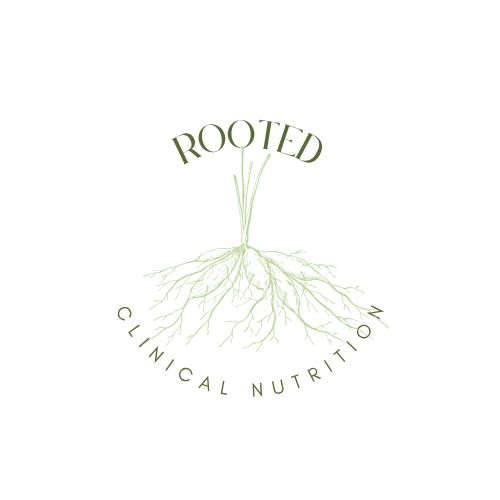Dietary Fat
Saturated, Monounsaturated, Polyunsaturated and Trans Fats
Dietary lipids (fats) are one of the three macronutrients the body needs to consume. Fats are necessary for different functions in the body:
1. Absorption of fat-soluble vitamins (A, D, E and K)
2. Insulating and protecting the body and our organs and lubrication of joints
3. Regulatory molecules formed by lipids are used to maintain homeostasis in many bodily processes
4. Store and provide energy for cells in the body
Dietary fat contributes the texture and flavor of the food we eat, like the fluffy inside of baked goods! Fats provide 9 kilocalories per gram and are energy dense. There are different types of fats. Understanding the difference between each type and the effects of consuming each type is crucial to maintain health and prevent risk of chronic disease. We’ll discuss saturated, monounsaturated, polyunsaturated and trans fat and the effects each has on our health.
Trans fat is not found naturally (or found in very low amounts) in food. It is processed and manufactured by adding hydrogen to liquid oil to solidify the oil and extend the shelf life. Diets rich in trans fat have been linked to increased risks of heart disease and high cholesterol levels.
Saturated fats are most commonly solid at room temperature and occur naturally in food. The most common saturated fat in the diet is palmitic acid. Diets rich in saturated fat have been linked to increased risks of heart disease.
Monounsaturated fats (MUFAs) occur naturally in food and can be liquid at room temperature. The most common monounsaturated fat found in the diet is oleic acid. MUFAs are associated with a lower risk of heart disease.
Polyunsaturated fats (PUFAs) occur naturally in food and can also be liquid at room temperature. PUFAs include the essential fatty acids: Omega-6 (linoleic acid) and Omega-3 (alpha-linoleic acid) which are important for metabolic processes in the body, play a role in immune response, and are associated with lower risk of heart disease.
It’s important to remember that naturally occurring fats (saturated, MUFAs and PUFAs) can all be found in food sources of dietary fat. For example, olive oil consists of a small amount of saturated fat, mostly monounsaturated fat, a very tiny amount of omega-3 polyunsaturated fat, and a small amount of omega-6 poly unsaturated fat. So, when you are consuming dietary sources of fat, you are consuming a combination of saturated, MUFA, and PUFA fats.
Common Food Sources of Each Type of Dietary Fat
-
Palm oil, meat, dairy (milk and cheese) and butter
-
Olive oil, peanut oil, sesame oil, nuts, avocado
-
Salmon, flaxseeds, walnuts, soybean oil, sunflower oil, and safflower oil
-
Hydrogenated vegetable oils, margarine, shortening
Low Intake of Unsaturated Fat - Impact on Health and Disease
When eating dietary fat, we want to consume more unsaturated (MUFAs/PUFAs) and limit saturated and trans fat. Unsaturated fats include the essential fatty acids (EFAs) that the body cannot produce, but are needed for bodily processes. EFAs are necessary for growth, development, fertility, formation of red blood cells, skin cells and nervous system function. EFAs are also used to make eicosanoids - molecules that regulate blood clotting, blood pressure and the immune response of inflammation.
Omega-6 EFAs make pro-inflammatory eicosanoids that are necessary for the inflammatory response when we have an injury or infection. They increase blood clotting, blood pressure and inflammation.
Omega-3 EFAs make anti-inflammatory eicosanoids that decrease inflammation, blood pressure, and blood clotting once the injury or infection is healed.
It is recommended to consume a 5:1 to 10:1 ratio of omega-6 to omega-3. Too much omega-6 and too little omega-3 (outside of the ratio) can create pro-inflammatory conditions. We want to steer clear of inflammation as it is a precursor to many metabolic and autoimmune diseases and increases risk for cardiovascular disease. The Standard American Diet consumes enough omega-6, it’s important to include sources of omega-3s like fatty fish (salmon, tuna, etc.), seafood, chia seeds, walnuts, edamame, flaxseeds/oil, and foods fortified with omega-3 in the diet to keep a healthy balance of EFAs. Consuming both MUFAs and PUFAs lowers risk of cardiovascular disease, lowers LDL cholesterol levels, improves blood pressure, immune and inflammatory processes.
Symptoms of insufficient unsaturated fats consumption include: deficiencies in vitamins K, A, D and E, acne, dry/dull hair, reduced eye function, and impaired wound healing.
High Intake of Trans and Saturated Fats - Impact on Health and Disease
Excess trans and saturated fats are commonly found in the Standard American Diet and contribute to excess consumption of calories, leading to weight gain and obesity. These types of fat can increase risk for developing chronic diseases like cardiovascular disease and even cancer. When the diet is high in saturated fats it affects the function of the liver and the ability to remove LDL cholesterol or “bad cholesterol” from the blood. High LDL cholesterol levels in the blood increase a person’s risk for developing atherosclerosis – a type of cardiovascular disease that involves the build-up of plaque in the arteries. Atherosclerosis increases chances of having a heart attack or stroke. A diet high in trans fat has an even greater risk for developing heart disease than a diet high in saturated fat. Trans fat increases LDL cholesterol levels, inflammation and damages blood vessels.
Symptoms of excess saturated and trans fats consumption include: obesity, high cholesterol, atherosclerosis, and cardiovascular disease.
References:
1. Smolin, L. & Grosvenor, M. Nutrition: Science and Applications. 4th ed. Wiley; 2019.

